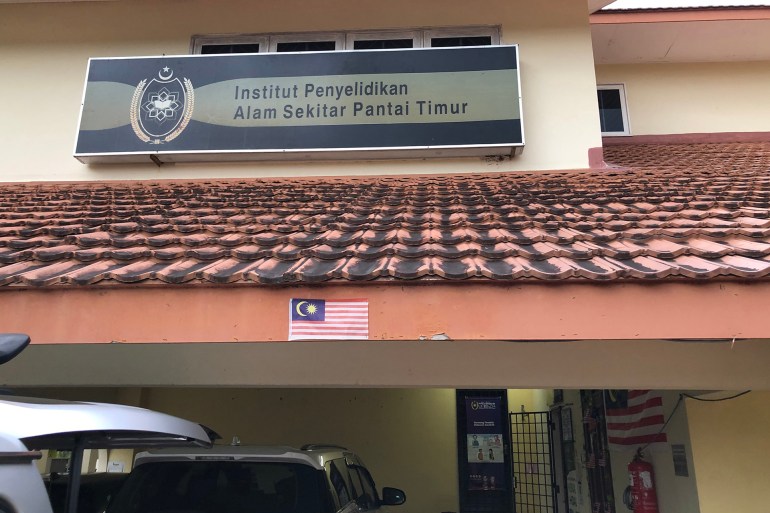Malaysian historians confirm that hundreds of thousands of Malay manuscripts exist outside the Malay region, and that a part of them was transferred by students of knowledge to other regions of the Islamic world, while many of them were seized by Europeans during the colonial eras, which lasted about 4 and a half centuries, especially the British, Dutch and Portuguese.
Professor of Malay history, Professor Amat Adam, demonstrates the bad faith of the colonialists, as he described the theft of Malay heritage, since those who transferred the manuscript literature to Europe were administrative and military officials, and they were not researchers, scientists or investigators.
This was confirmed by the Libyan manuscript expert, Dr.Adel Abdulaziz Al-Gharyani, who oversees a large program for archiving manuscripts and historical documents at Sultan Zain Al-Abidin University in the Malaysian state of Tringano, and Al-Gharyani spent about 20 years working on the verification of manuscripts in Malaysia.
Tsunami heritage
Al-Ghariani says that the 2004 earthquake and tsunami sounded the alarm of the heritage extinction, and in the opinion of other researchers, the danger did not stop at the destruction of many manuscripts.
He even drooled from collectors of manuscripts for financial and commercial purposes, and they found in the effects of the earthquake an opportunity to collect the largest number of them from the libraries of the Indonesian state of Aceh, which was the most affected by the tsunami.
Al-Gharyani believes in his interview with Al-Jazeera Net that what complicates the process of collecting and documenting manuscripts is the refusal of many of their owners to hand them over to the competent authorities for their restoration or to provide copies of them for electronic archiving, as they are considered family heirlooms or personal property, and the difficulty of accessing the smuggler to other countries, especially countries. Former colonialism.
Al-Ghariyani estimates the number of Malay manuscripts in Western countries at hundreds of thousands of copies, and he does not see the point in cases filed to retrieve the stolen manuscripts, and he prefers to reach settlements that allow access to them and obtain electronic copies of them.
Al-Gharyan added that the Institute for Research of Islamic Product and Malay Civilization at Sultan Zain Al-Abidin University managed to obtain 30,000 electronic copies from Britain alone, and that work is underway to obtain tens of thousands of copies of other manuscripts.
Documentation responsibility
Professor of Malay history, Professor Amat Adam, spent 5 years investigating a copy of the book "The Sultans of Sultans". He says that he obtained a copy of the manuscript after discussing a doctoral thesis by a Russian student who had investigated it, and that he extracted many errors after comparing the Russian researcher's investigation with other copies of the manuscript in Malaysia.
Professor Adam is working on the verification of a manuscript book with the same name written in 1612, dating the Malay region before the British, Dutch and Portuguese colonization of the region, and praying to God that he will not die before the completion of the manuscript investigation, and he entered the ninth decade of his life, he spent his bulk in the investigation of manuscripts.
The Research Institute of Islamic Product and Malay Civilization at Sultan Zain Al-Abidin University (Al-Jazeera)
He adds that the original book of the Dynasty of Sultans is missing, and the author's name is not known.
But Malay historians suggest that the author is the owner of the pseudonym "Ton Sri Lanang", which means in the Javanese language, which was used at the time, "the Honorable Lord", or Al-Mahmoud as it is in the Arabic language, and he attributes the impersonation of a pseudonym to a custom that was known by the famous and influential Malay For social and political reasons.
Historical bond
Daoud Al-Hadabi, professor of philosophy at the International Islamic University, believes that Malay manuscripts confirm the depth of the historical relationship between the Malay and Arab regions, as they document the exchange of Malay and Arab scholars on scientific journeys for hundreds of years.
He is supported by Dr. Al-Ghariani, who emphasizes the spirit of one belonging to the scholars of the two regions, and cites the well-known Libyan scientist Abdullah Al-Ghadamesi (1892-1975) who immigrated to Malay for the sake of science, and authored many books in the Malay language as well as many Malay scholars wrote books. Many are in Arabic.
He compares Arabic and Malay literature, as Arabic is characterized by its capacity and reaches huge volumes, while most Malay manuscripts are letters and books that do not exceed 3 or 4 volumes.
Many experts in the field of documenting manuscripts express their confidence that digitization and electronic archiving constitute a new breakthrough for researchers, and that it would facilitate researchers from all over the world to access manuscripts, compare copies with each other during investigation processes, and solve the problem of monopoly under the name of intellectual property of the manuscript.

